The Achilles tendon is the thickest and strongest tendon within the body; although occasionally it is exposed to stresses which make is susceptible to injury (Figure 1). Injuries to the Achilles tendon commonly occur when forces placed on the tendon exceed its tensile limits.

The Achilles tendon is a strong fibrous cord that connects the gastrocnemius and the soleus muscles to the calcaneal tuberosity (heel bone) (Figure 2).

Common causes of injury to the Achilles tendon include repetitive or sudden increase of stress on the tendon, an increase is exercise intensity, not allowing for recovery time between exercises, a decreased range of motion due to tightening calf muscles and/or bone spurs which cause rubbing against the tendon (Figure 3).
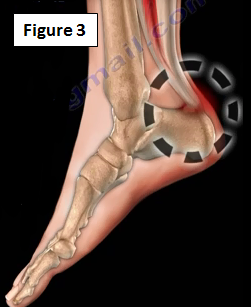
The two most common types of Achilles tendon problems are Achilles tendonitis and an Achilles tendon rupture (Figure 4).
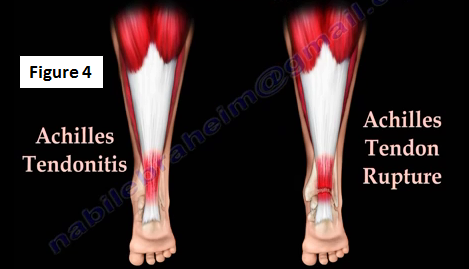
Tendonitis involving the Achilles tendon is painful and often debilitating (Figure 5). Chronic inflammation of the Achilles tendon is due to stresses and micro-tears and is also a result inflammation and scar formation. Achilles tendonitis usually leads to pain in the back of the heel and the occasional swelling due to thickening of the tendon. This often occurs in athletes such as runners. Treatment for Achilles tendonitis includes anti-inflammatory medication, physical therapy (utilizing the active release technique), massage therapy, ice, immobilization and injections. The techniques for injections often include prolotherapy, platelets and needling. These techniques for injections are performed with or without ultrasound guidance; however they are still in the investigative phase. It is advised not to inject steroids directly into the tendon. The goal of treating Achilles tendonitis is the reduce stress on the tendon. In rare or difficult cases surgery is sometimes needed.
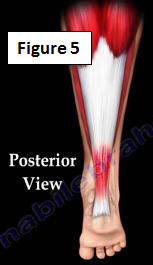
Rupture of the Achilles tendon can be either partial or complete (Figure 6). A rupture of the tendon may occur suddenly without warning or as a result of tendonitis.
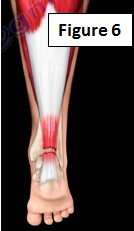
What happens when the tendon ruptures?
The patient will feel or hear a "POP" when the tendon ruptures (Figure 7). There will be pain felt in the back of the ankle, and the foot will become floppy and weak. Finally, the patient feels as if they were being kicked in the back of the ankle where the tendon snapped.
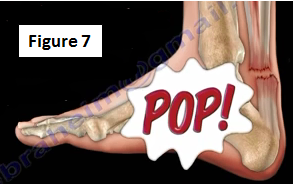
The Thompson test is a clinical evaluation test used to assess the integrity of the Achilles tendon (Figure 8). With the patient lying prone on the examination table, the examiner will squeeze the calf muscles of the affected leg. Slight plantar flexion of the ankle is a normal response to this examination when there is no rupture. However, if the Achilles tendon is ruptured, plantar flexion or movement of the ankle in response to the squeezing of the calf muscles will not occur (silent ankle not connected to the calf muscles).
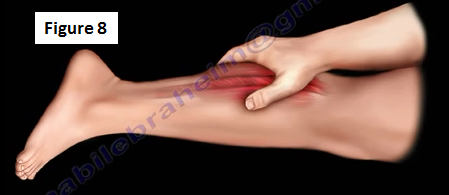
Surgery is done by exposing the torn tendon through an incision in the skin (Figure 9). The ends of the tendon are cleaned and approximated. Once the tendon has been cleaned, repair of the ruptured tendon can be done with sutures. The Thompson test is once again performed to check the integrity of the Achilles tendon after repair.
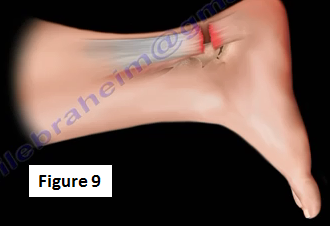
A cast or splint is used for four to six weeks post-operatively. Then physical therapy is initiated.
For more information on the Achilles Tendon, click below:
https://www.youtube.com/watch?v=y9QAK-QdqA0
https://www.youtube.com/watch?v=F2e6LmQsJps
https://www.youtube.com/watch?v=_YBUb1-yBX4
https://www.youtube.com/watch?v=GEmnRNwDFFQ
For more information, visit my YouTube Channel:
https://www.youtube.com/user/nabilebraheim
-- This feed and its contents are the property of The Huffington Post, and use is subject to our terms. It may be used for personal consumption, but may not be distributed on a website.
No comments:
Post a Comment